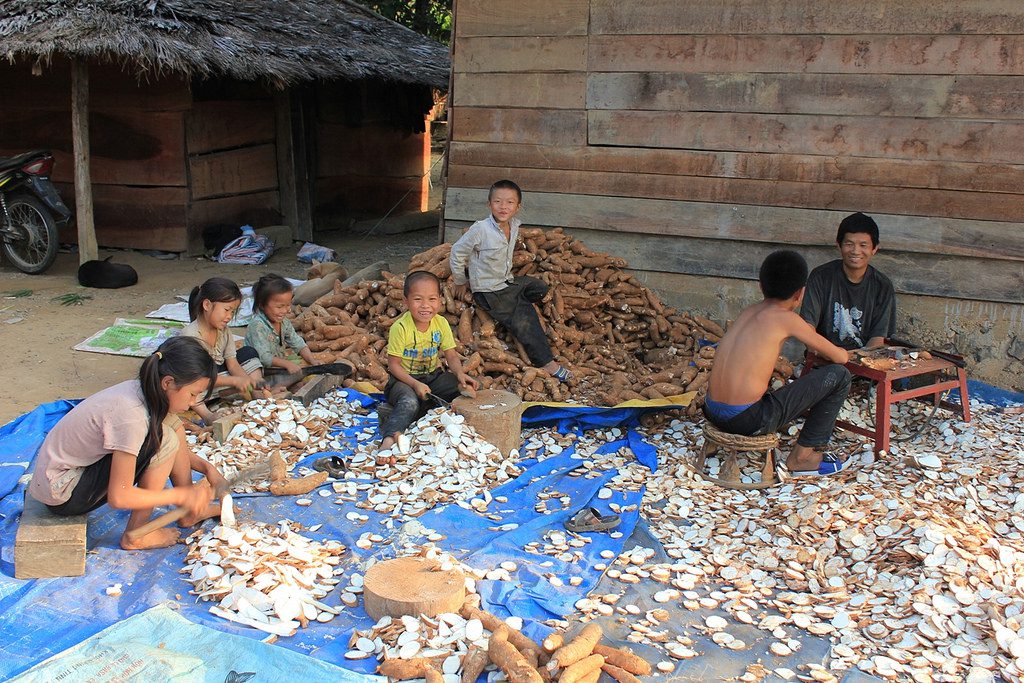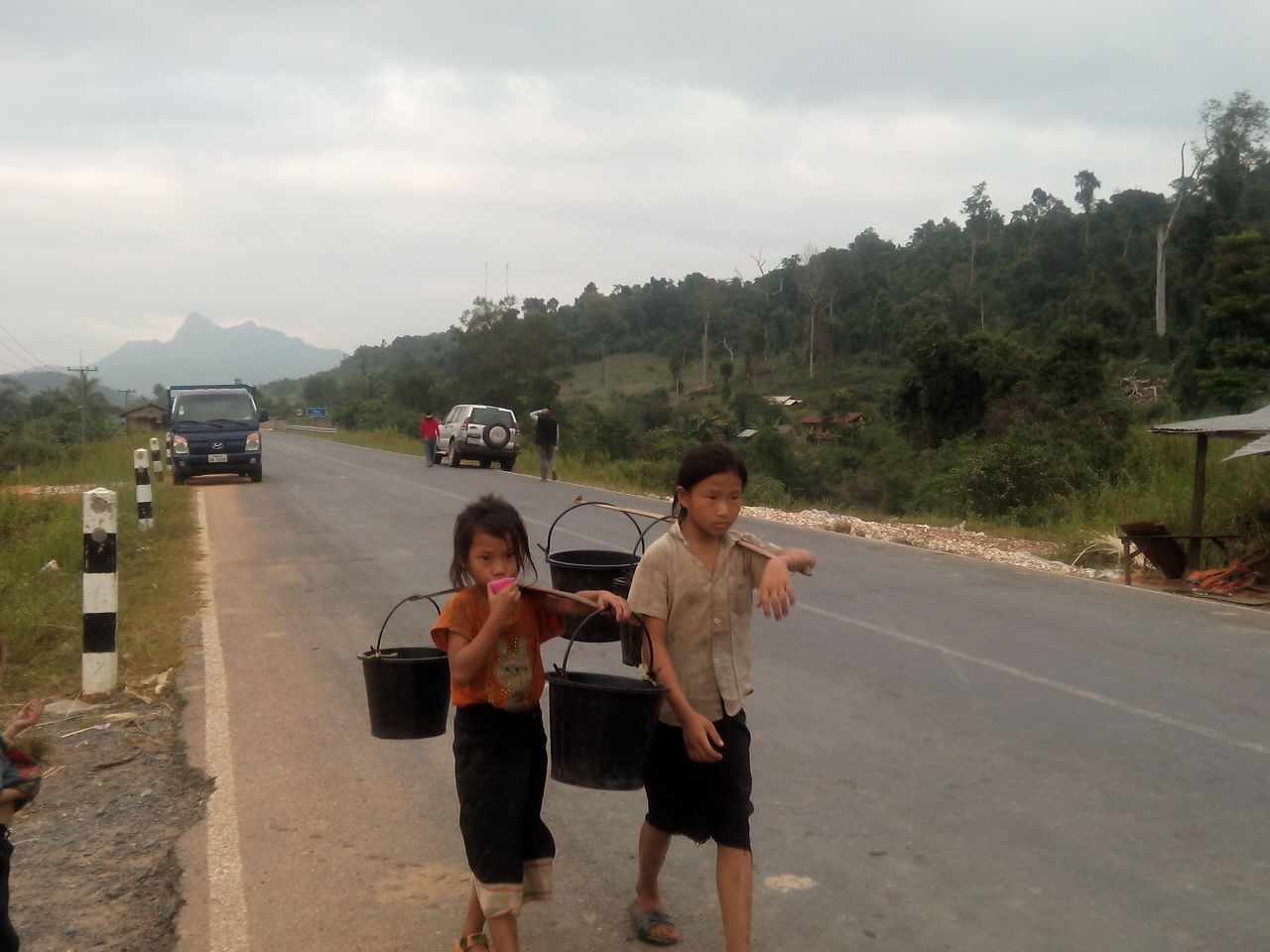Wednesday February 18, 2015

People in rural areas of Lao PDR mostly depend on nature to harvest and collect various resources for their family’s consumption. Farming, especially rice cultivation, is a main occupation for rural people, and can consist of many integrated activities, such as gardening, raising cattle and poultry, and growing cash crops to feed both humans and animals. Growing cassava for animal feed is often a secondary source of household income after rice harvesting. Cassava is a type of industrial crop, and people harvest both the starchy tuber and the stems. Many people usually grow cassava in their allocated lands, gardens, or upland areas for a period of 6-8 months. The final crop production will vary depending on factors such as water availability, soil fertility, the varieties cultivated, and growing techniques. When cassava is harvested, people usually sell the roots to a middleman who comes to the village. People can also eat the young leaves and roots of the plant, or use it to make cassava alcohol.

FISHBIO staff took these photos while in the field at Naxouang Village in Viengthong District, Bolikhamxay Province in central Lao PDR. The top photo shows a family of children cutting cassava into small pieces and drying it out in the sun to increase its value for sale. The family will likely sell the cassava to a middleman for making tapioca or animal feed. The income from selling the crop might be spent for household expenses and supporting their children’s education. After children finish their schoolwork, they often help their parents with chores such as housework (like carrying water in the above photo), feeding livestock, cutting cassava, cooking, and learning how to use knives from their parents or other adults. Cassava cultivation is one way to help families alleviate poverty and improve their living condition.
